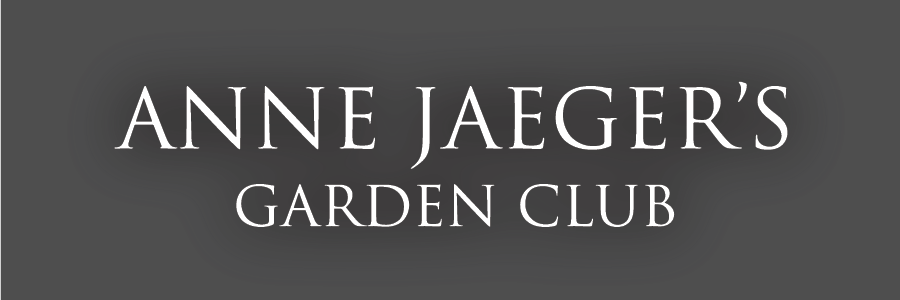Anne Jaeger
At first blush, January’s garden seems a quiet affair. Most of the perennials are resting and remain dormant until their big spring fling; the trees are in their birthday suits and summers excess is a distant memory. However, right under our noses, intermittent flecks of colorful blooms slowly unfurl under a winter sky. Perhaps that is why I am so mesmerized by plants, shrubs or trees that not only bloom in winter’s doldrums, but also make the extra effort to smell good too! There’s one more important asset to January’s blooming plants; because there is little else to distract our eye, the scent and color of these flowers steal the show. For that, the following plants in my garden get extra brownie points (for a plant, a brownie point means a nice dollop of rich dark brown compost at their feet!)
Winter Daphne
Plant this in full sun near your front door and your guests will waft through the air on its sensuous scent, their heels barely touching ground. The smell of Daphne odora is unparalleled in the winter garden. Not only are the leaves thick and glossy all year long but the flowers bloom either creamy pink with deep red edging to white (‘Alba’)or pale pink (‘Leucanthe.’) There are only two drawbacks to this wonderful plant; Daphne needs EXCELLENT drainage and does not like their roots cutback in any way. So cut your losses by digging an extra big planting hole and adding 1 part sand and 2 parts bark to the existing soil at planting time. And one more point that seems counterintuitive about Winter Daphne— the less you water (while keeping it alive) in the summer the more flowers it will produce next January. Sounds perfect to me.
Sweet box
You can smell a Sweet box or Sarcococca ruscifolia long before you can find it or say it for that matter! Although this year round green leafed plant only grows about 6 inches a year, the Sweet box is a very orderly shrub of the waxy dark green persuasion. Along about this time of year, I wander out near my bubbler fountain and smell a heavenly scent. Interestingly enough, without the fragrance (which can be smelled 5 feet away) the flowers are hidden by the leaves and would be missed completely. Another bonus point for the Sarcococca (say: “Sar-koh-KOK-uh) is the red fruit which stand out far better, after the flowers.
Flowering Quince
The Anna’s hummingbirds are so happy when the Flowering Quince breaks bud. The little flutters fight over its flowers. Fortunately, the shrub is so packed with flowers there are enough for everyone’s flight of fancy. Flowering Quince or Chaenomeles (say: Kee-NOM-el-eez) is one of the very first shrubs to bloom every year with decidedly Asian Ikebana style flowers on leafless branches. Flowering Quince couldn’t be easier to grow; it likes almost any soil except the alkaline propensity of the Jantzen Beach area. Other than that, all a quince requires is regular watering in summer and full sun to produce vivid flowers of either white, pinks, bright red to reddish orange.
Winter Honeysuckle
This is my favorite of the Honeysuckle vines. Not just because of its pompous botanical name: Lonicera fragrantissima (say: Lon-ISS-er-uh) but because this woody vine has the guts to bloom when other plants are merely shivering in their roots. I’ve almost killed this poor plant twice for lack of water in summer and both times it comes back blooming like a trooper. The flowers are creamy white tubes less than an inch long. One note about the winter honeysuckle; although it takes very well to pruning, just remember the flowers bloom on LAST year’s wood, so don’t get carried away or you’ll cut off all of January’s flowers in June!
There you have it, just a few of my winter flowering, fragrant, favorites. Each has color, smell and style so absent in the sleepy cold of the average January garden. So, if your garden doesn’t have its own fragrance in January and February, it’s time to take a trip to the local nursery and plant one of these bloomers. All you have to do is follow your nose.
Winter Bloomer
Daphne odora
Flowers: white, creamy white, pink with red edges.
4’ high/8’ wide
Plant in part shade
Needs excellent drainage but little water.
Fertilize after bloom.
Sweet box
(Sarcococca ruscifolia)
Flowers: small and white.
Red fruit follows flowers.
Slow grower: 4’ high/7’ wide.
Prefers soil rich in compost, peat moss, bark.
Flowering Quince
(Chaenomeles)
Flowers: 1”wide, white, pinks, bright red to reddish orange.
Many varieties: 10’ tall or very low growing.
Easy to grow.
Regular watering required.
Winter Honeysuckle
(Lonicera fragrantissima)
Flowers: creamy white.
Red fruit follows.
Stiff woody vine: 8’.
Leaves evergreen here: oval green, blue green underneath.


